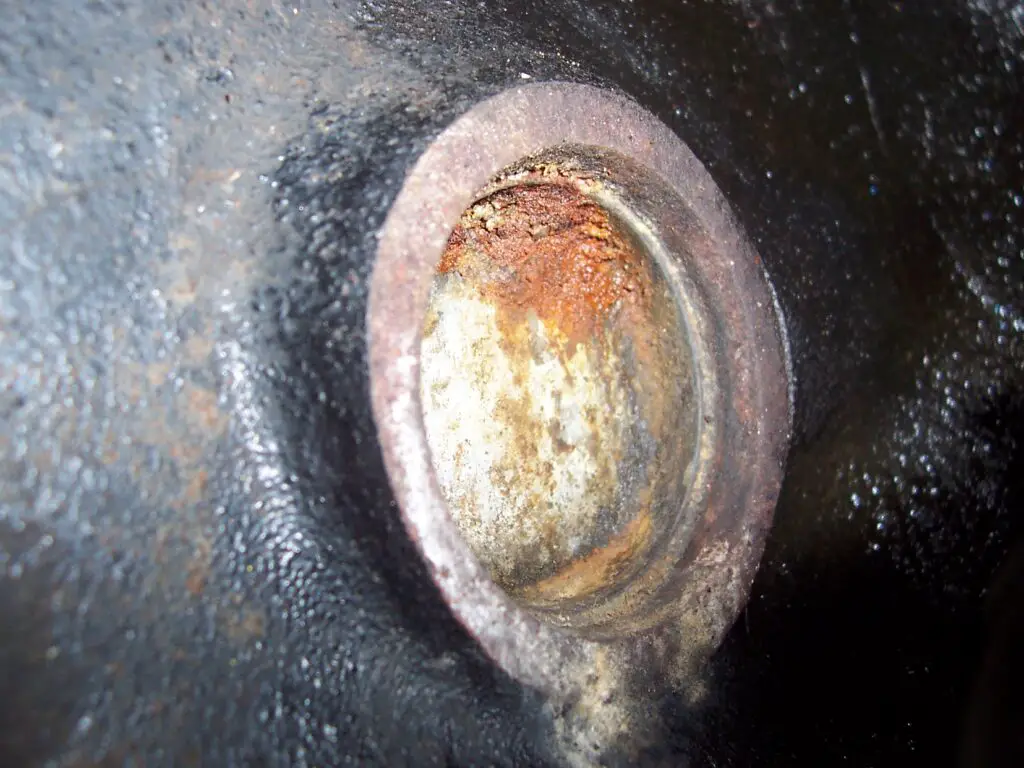Table of Contents
Freeze plugs also go by the name core plugs. They are cylindrical shaped plugs that are used to fill the passages in engines. These plugs are essential because they help protect your car against cold-related damage. Unsurprisingly, most drivers do not care about their freeze plugs. They don’t check it, and some don’t even know that it exists. And most times, they don’t have to. It just works out well for them.
But sometimes it doesn’t. Even though freeze plugs can last for the longest time, they aren’t immune to breaking down. And when they do, it is in your best interest to get it fixed to avoid further damage to your engine.
What Do Freeze Plugs Do

A freeze plug is a plug used to fill the sand casting core holes found on internal combustion engines that use water coolants. The engines’ holes are a relic from the engine’s production phase and are useless after the engine has been produced. The freeze plug is the cap placed at the top of these holes to stop water or coolant (antifreeze) from leaking out.
A freeze plug is a device that acts as some insurance against a terrible situation. And what’s that horrible situation? Your car’s water coolant freezing.
When this coolant gets frozen, it bulges against the side of the engine block. The only thing that stops the frozen block from getting out is the freeze plug on its head.
But how would you know when your freeze plug is bad? Well, let’s find out.
Symptoms Of A Bad Freeze Plug
- If you notice any of the following, it probably means that your freeze plug has blown.
- If you notice a low coolant level in the coolant reservoir and discover no visible leaks, it could mean the freeze plug has blown.
- If you notice a strong smell of heated coolant, it could mean the freeze plug has blown, and the coolant is leaking from your engine.
- If you check the oil cap and notice milky discoloration, you should probably check your coolant reservoir.
- White exhaust smoke could also be a symptom of a blown freeze plug.
- The engine constantly overheating is probably a sign that most of the coolant in the engine has leaked.
- Engine misfiring could also be another sign.
- If you notice bubble formation in the coolant system, you should check the coolant reservoir.
- Problems with idling and acceleration could also be another sign of coolants.
Causes Of Bad Freeze Plugs
Freeze plugs don’t often get spoilt, but when they do, there is usually just one reason; when water freezes, it expands. If the water in your engine block freezes, it will expand and push against the freeze plug. When it does, the plug will pop since it is the weakest element of the engine block. When the coolant freezes, it will expand within the engine block, cracking it and destroying the motor.
After that happens, the coolant/water will leak and trickle down the engine, further damaging the engine block.
However, this isn’t the only reason freeze plugs get bad. There are other reasons. For example, your freeze plug could leak because of your car’s heating cycle.
How To Fix Bad Freeze Plugs
- First off, seal up the freeze plug with a sealant. This isn’t a permanent solution, though. The sealant only helps to prevent the leakage until you can get replacement parts.
- If you’ve gotten replacement parts already, here’s what you should do. Hit the freeze plug repeatedly until it almost pops out completely. Afterward, pull out the plug with pliers.
- Next, you have to deal with the insides of the hole. Clean it out with sandpaper to remove old sealants and rust. You will notice a lot of corrosion signs. Try to clear them all out. If you don’t clear it all out, it could very well lead to future leak problems.
- Put the replacement plug in the hole, and cover it. Then use a screwdriver or pliers to hammer the plug right in its place. You have to make sure the plug plugs the hole. Once the plug is in place, surround it with sealant. This sealant will help solidify the position of the plug. And voila, you’re done.
People also ask
Can You Drive With A Bad Freeze Plug?
Yes, you can drive with a bad freeze plug. The engine will run, but the coolant level will below. This will make running the car harder and harder. Running an engine with a coolant level constantly running low could lead to engine failure.
Are Freeze Plugs Hard To Replace?
Freeze plugs aren’t hard to replace— as long as the engine isn’t yet damaged. However, it isn’t easy to replace them while the engine is in the car. Getting to them in that position can be rather tricky.
How Much Does It Cost To Replace Freeze Plugs?
Replacing freeze plugs isn’t tricky. However, you may have to remove your engines to get it replaced. That’s why it could cost up to a thousand dollars. However, if your car offers easy access to the engine, you could get your freeze plug replaced for just about 100$.
Can You Replace Freeze Plugs Without Replacing The Engine?
In certain cars, yes. However, other cars don’t make it so easy. You may have to get the engine removed.
Can A Bad Freeze Cause Overheating?
Yes. One of the symptoms of a bad freeze plug is overheating. So, yes, a bad freeze plug can cause overheating.
Read more the information about OBD2 Freeze Frame Data HERE

